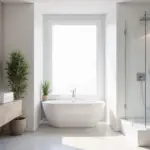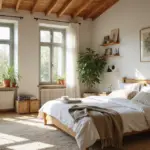Hey there, design enthusiasts! Zara here, ready to brighten up your world with some dazzling insights on living room lighting ambiance. You know that magical feeling when you step into a room and instantly feel at ease? That’s the power of good lighting, my friends. Whether you’re curling up with a book or hosting a dinner party, the right lighting can transform your living room from blah to brilliant.
Living room lighting ambiance isn’t just about flipping a switch; it’s about creating a mood and bringing your space to life. In this article, we’ll explore a rainbow of different lighting ideas for living rooms that’ll help you craft the perfect ambiance for any occasion. So, grab a cup of chai, get comfy, and let’s embark on this illuminating journey together!

Key Takeaways
Before we dive in, let’s shine a light on some key points:
- Understanding lighting basics is crucial for creating a space that feels just right.
- Dimmable lights are your best friends for flexibility and mood-setting.
- Color temperature can make or break the vibe you’re going for.
- Mixing different wattages adds depth and interest to your lighting scheme.
- Natural light is a game-changer – learn to harness its power!
- Balancing different types of lighting is the secret to a well-lit, inviting space.
Now, let’s flip the switch and get started!
Understanding Lighting Ambiance
Living room lighting ambiance is like the invisible conductor of your space’s orchestra. It sets the tone, creates the mood, and tells your guests (or just you) what to expect. Think of it as a painting with light. The color, intensity, and placement of your lights all work together to create a masterpiece.

Role in Mood Creation
Lighting is a total mood-maker. Soft, warm lighting can turn your space into a cozy nest perfect for Netflix marathons. Bright, cool lighting can transform it into a productive haven for tackling your to-do list. It’s all about matching the light to your vibe.
Importance of Layering Light
Layering light is like creating a delicious lasagna of illumination. You’ve got your base layer of ambient light, then you add in some task lighting for reading or working, and top it off with accent lighting to highlight your favorite art piece. This layering technique creates a flexible space that can adapt to whatever life throws at you.
Importance of Dimmable Lights
Dimmable lights are like having a magic wand for your living room lighting ambiance. With dimmable lights, you’ve got a whole spectrum of brightness to play with. When choosing stylish and functional living room table lamps, look for ones with built-in dimming features. They’re game-changers for creating that perfect ambiance.
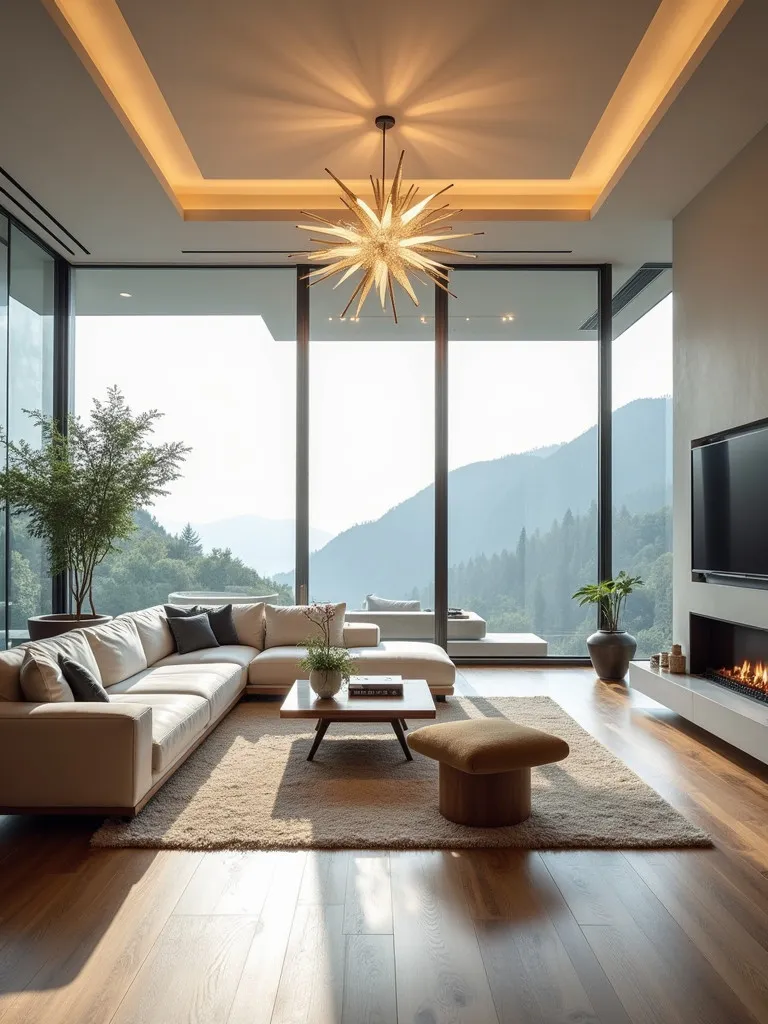
Enhance Mood Flexibility
Dimmable lights give you the power to change the mood of your room in an instant. Have friends over for a lively game night? Crank up the brightness. Transitioning to a chill hangout session? Dim those lights and watch as the atmosphere softens.
Energy Efficiency Benefits
Dimmable lights aren’t just great for setting the mood; they’re also fantastic for Mother Earth (and your wallet). When you dim your lights, you’re using less energy, which means lower electricity bills and a smaller carbon footprint. It’s a win-win situation!
Exploring Color Temperature
Color temperature is like choosing between a cozy campfire and a refreshing mountain stream for your living room. Warm light, with its soft yellow or amber tones, is perfect for creating a relaxed, inviting atmosphere. Cool light has a crisp, bluish tint that can make you feel more alert and focused.
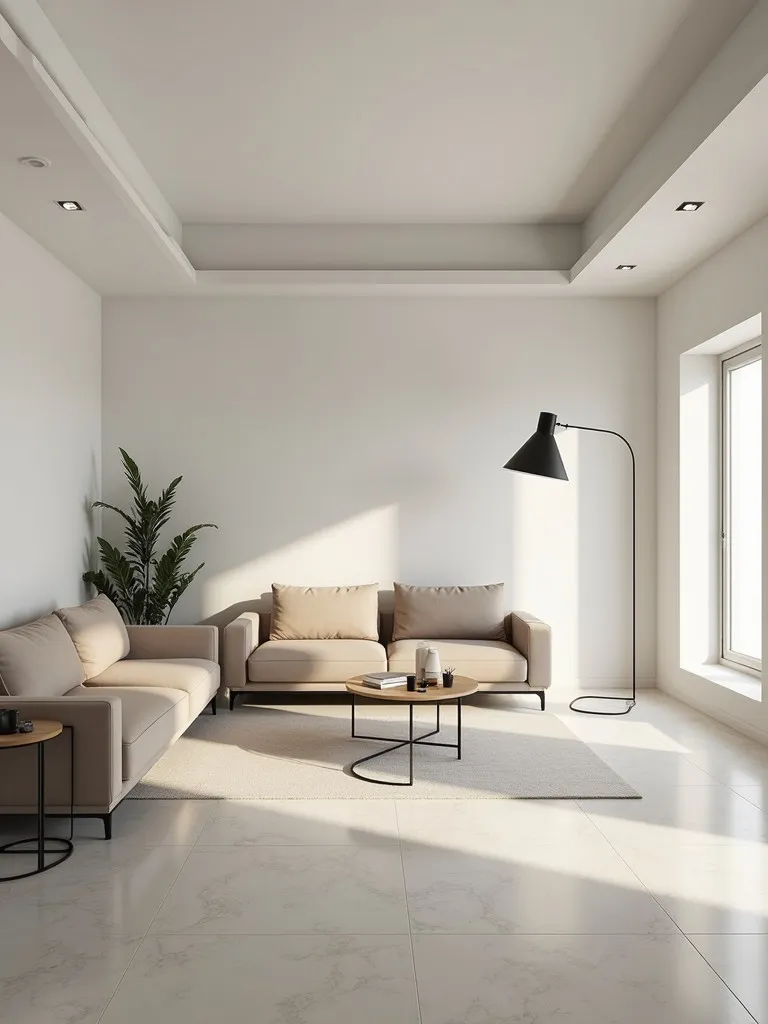
Using living room wall sconces with warm light can create a cozy reading nook, while cooler overhead lighting can be great for daytime productivity.
Impact on Room Atmosphere
The color temperature you choose can completely transform the feel of your space. Warm lighting can make a room feel smaller and more intimate, while cool lighting can make a space feel larger and more open. By playing with color temperature, you can highlight different aspects of your decor.
Choosing the Right Temperature
Here’s a quick guide for choosing the right color temperature:
- For relaxation and cozy evenings: Go for warm light (2700K-3000K)
- For a balanced, neutral feel: Aim for the middle ground (3500K-4100K)
- For energetic, daytime activities: Opt for cool light (5000K-6500K)
Remember, smart bulbs can often switch between warm and cool, giving you the best of both worlds.
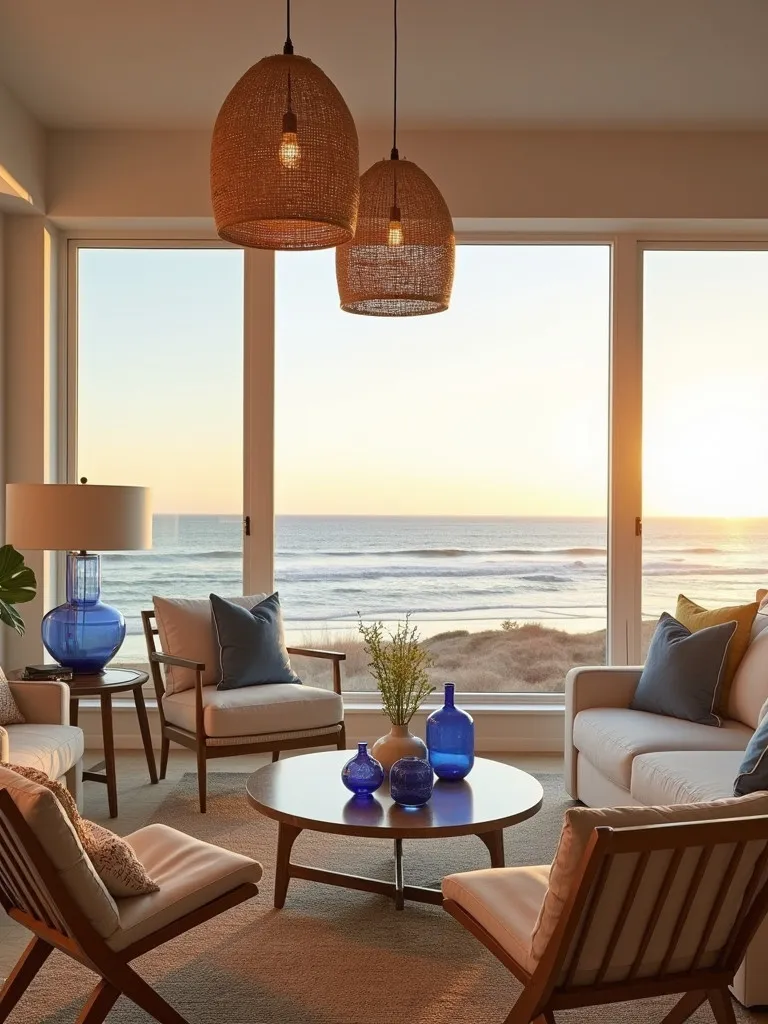
Utilizing Different Wattages
In the world of living room lighting ambiance, wattage is like the volume control for your lights. Higher wattage means brighter light, while lower wattage gives you a softer glow. With modern LED bulbs, pay attention to lumens (brightness) rather than just wattage.
Creating Desired Intensity
Creating the perfect intensity is like being a DJ for your lights. Mix and match different wattages to create layers of light that work together harmoniously. Use higher-wattage bulbs in your main ceiling fixture, medium-wattage in floor lamps, and lower-wattage in table lamps or sconces.
Balancing Light and Energy Use
LED bulbs are your best friends for balancing light intensity with energy efficiency. They come in a range of wattages and brightness levels but use a fraction of the energy of traditional bulbs. Consider using smart bulbs or plugs that you can control with your phone or voice assistant for easy adjustments.
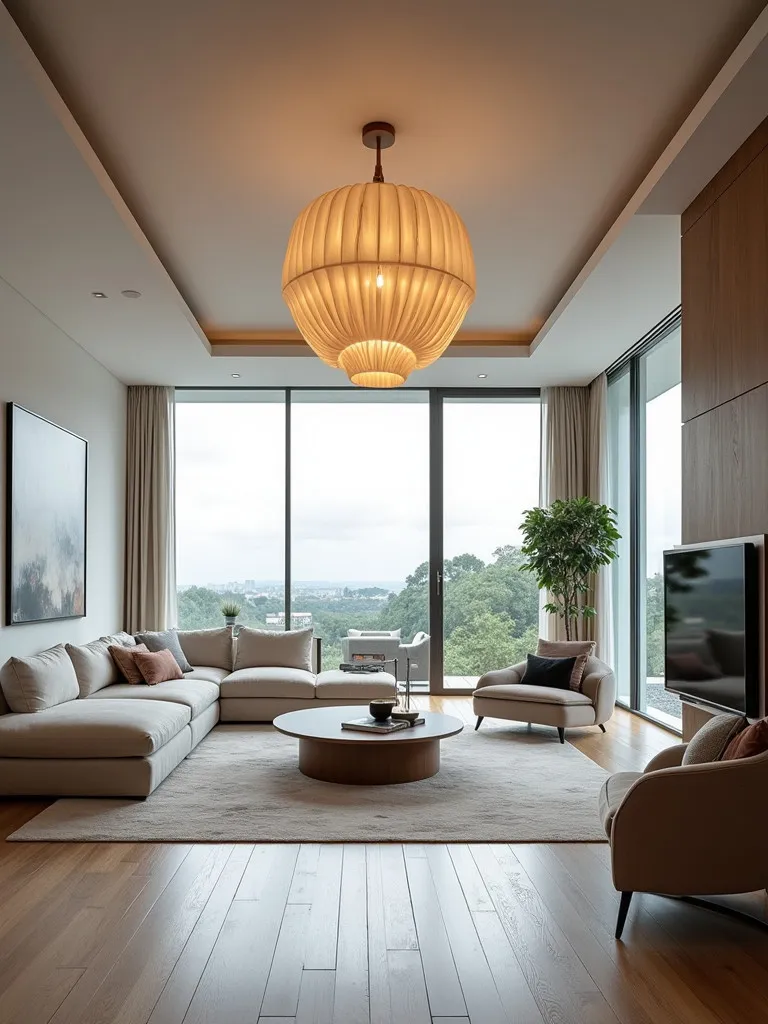
Types of Lighting for Ambiance
Ambient lighting is the foundation of your living room lighting ambiance. It’s the general illumination that allows you to navigate your room without bumping into furniture. This typically comes from ceiling fixtures, but don’t forget about floor lamps with upward-facing shades for a soft, diffused glow.
Task Lighting Essentials
Task lighting is your secret weapon for getting things done in style. Table lamps are the superstars here – place them strategically near your favorite reading chair or on your desk. Look for lamps with adjustable arms or heads so you can direct the light exactly where you need it.
Accent Lighting Techniques
Accent lighting is all about creating visual interest and highlighting the best features of your living room. Use spotlights or track lighting to showcase artwork, or try uplighting behind plants for beautiful shadows. For a touch of whimsy, consider string lights draped along a bookshelf or a salt lamp tucked into a corner.
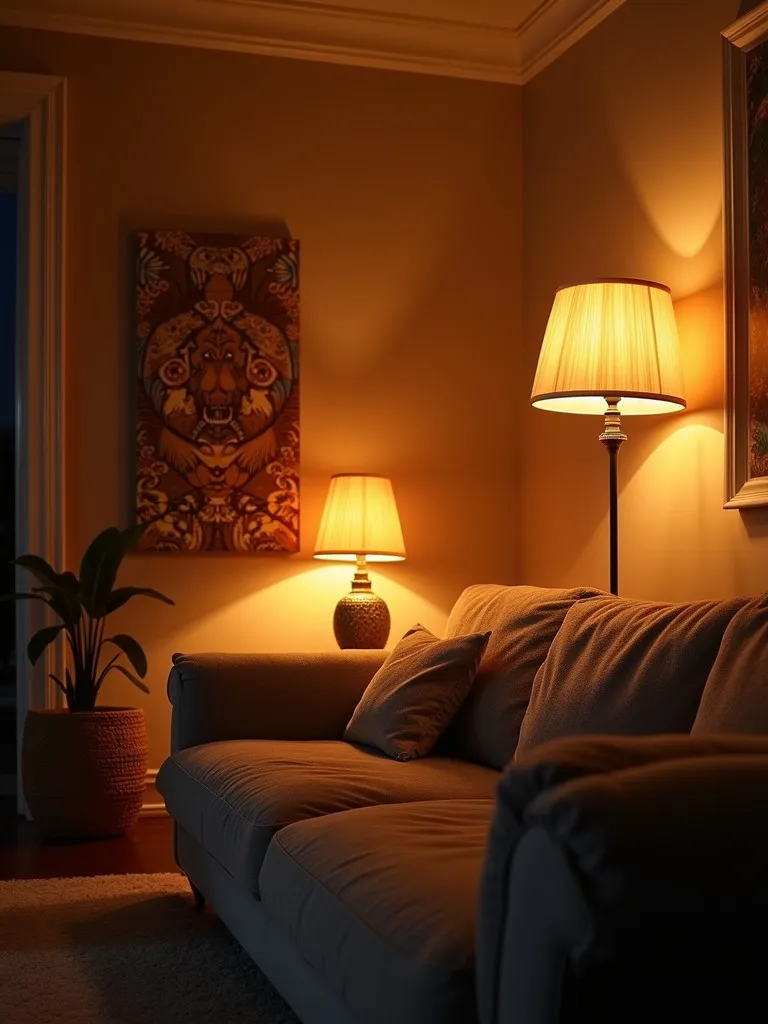
Enhancing with Natural Light
Natural light is nature’s ultimate mood-lifter! Keep your windows clean and consider using sheer curtains for privacy while still allowing light in. Strategically placed mirrors can work wonders in bouncing natural light around your room. And don’t forget about wall color – light, neutral shades reflect more light, making your space feel brighter and more open.
Combine with Artificial Light
The real magic happens when you blend natural and artificial light seamlessly. As the day progresses, supplement fading daylight with your artificial lighting. Use dimmable lights to create a smooth transition that keeps your living room feeling cozy and well-lit, even as the sun goes down.
Benefits of Natural Illumination
Natural light is incredible for your mood and overall well-being. It helps regulate your circadian rhythm, improving sleep patterns and boosting your mood. Plus, it makes colors appear more vivid and true to life, ensuring your carefully chosen decor looks its absolute best.
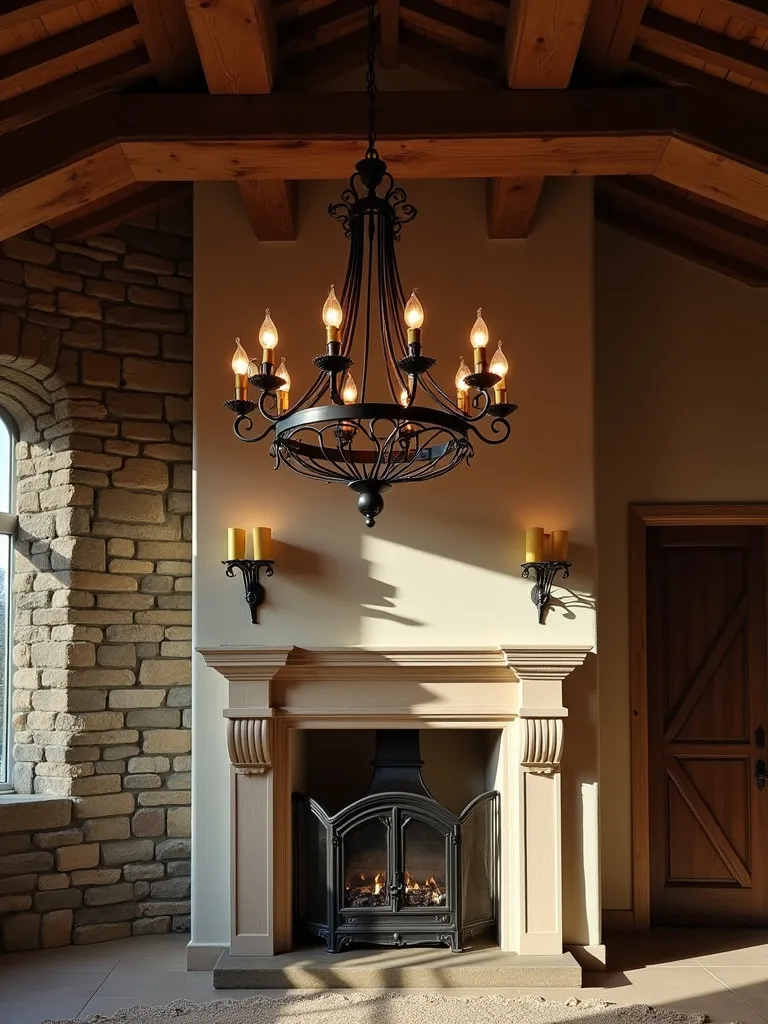
Achieving Balanced Lighting
Creating the perfect living room lighting ambiance is all about layering your light sources. Start with ambient lighting as the base, add task lighting for functionality, and sprinkle in accent lighting for visual interest. This approach gives you the flexibility to easily adjust the mood of your room for any occasion.
Harmonize Colors and Brightness
Create harmony between your light sources by choosing bulbs with similar color temperatures for a unified feel. When it comes to brightness, think in layers again. Your ambient lighting should provide a good base level of illumination, task lighting can be brighter in specific areas, and accent lights are often softer and more focused.
Avoid Over-Illumination
A too-bright living room can feel harsh and uninviting. Here are a few tips to keep things balanced:
- Use dimmers wherever possible.
- Opt for multiple, lower-wattage light sources rather than a few super-bright ones.
- Consider the natural light in your room.
- Pay attention to glare, especially if you have a TV in the room.
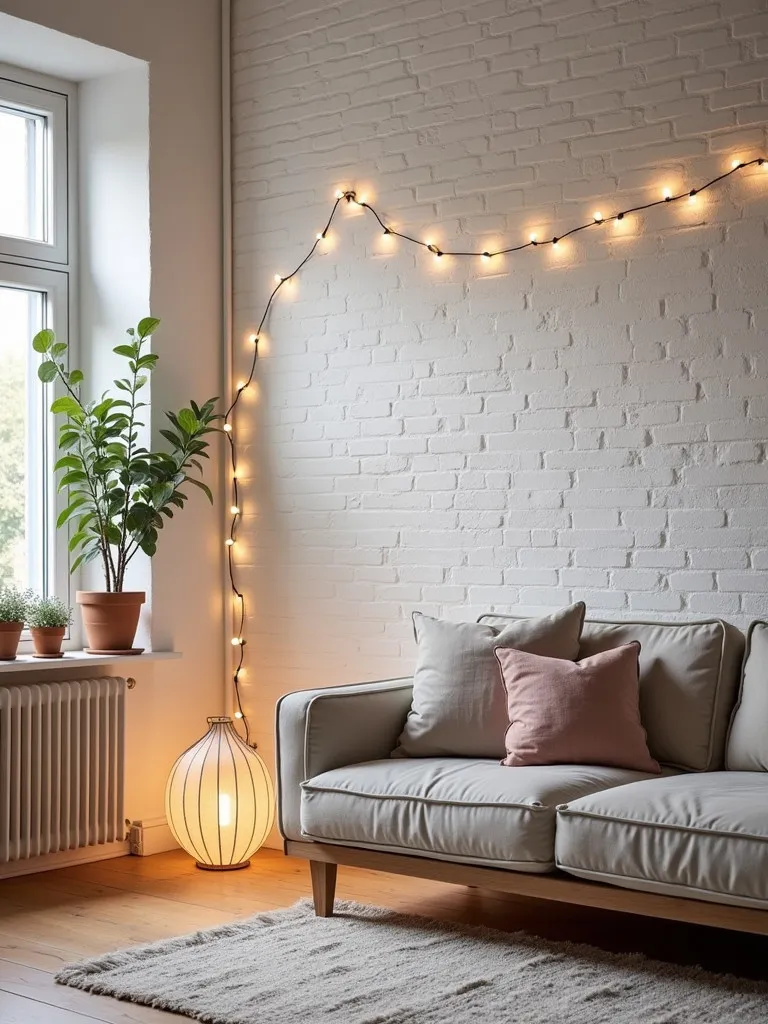
Closing Thoughts
Wow, what a journey we’ve been on, exploring the wonderful world of living room lighting ambiance! From understanding the basics to mastering the art of layering light, we’ve covered a lot of ground. But remember, creating the perfect lighting for your living room isn’t just about following rules. It’s about expressing your personality and creating a space that feels uniquely you.
I encourage you to play and experiment with your lighting. Try different combinations, move lamps around, and adjust your color temperatures. Your living room is like a canvas, and light is your medium. Don’t be afraid to get creative!
The best living room lighting ambiance is one that makes you feel at home. Whether that’s a bright, energizing space for daytime productivity or a soft, cozy haven for evening relaxation, the choice is yours. Trust your instincts and go with what feels right to you.

Before I go, here’s a little Green Tip of the Day: Consider switching to LED bulbs if you haven’t already. They use less energy, last longer, and come in a variety of color temperatures. It’s an easy way to make your lighting more eco-friendly without sacrificing style or function.
So, are you ready to transform your living room with some amazing lighting? I can’t wait to hear about the warm, inviting spaces you create. Remember, every flick of a switch is an opportunity to set a new mood, tell a different story, and create a living room that truly lights you up inside and out.
Now, go forth and illuminate your world, one beautifully lit living room at a time!

